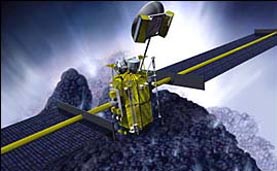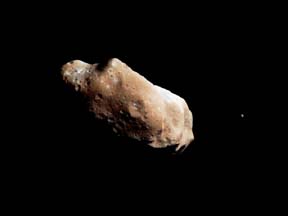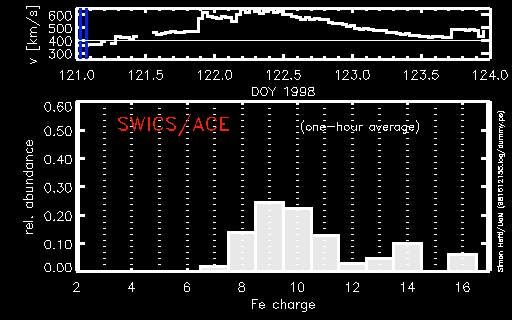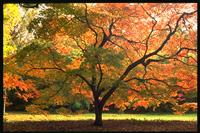This is an image of the Ring Nebula, looking as if from the end of a
barrel.
Click on image for full size
Hubble Space Telescope image courtesy of STScI
Hubble Adds a New Dimension to Nebula
News story originally written on January 7, 1999
Scientists used the Hubble Space Telescope to look at the Ring Nebula
(also known as M57). The
nebula
gets its name from its shape--it looks like a ring. The HST pictures show
that the nebula is actually shaped like a cylinder.
The nebula formed from gas escaping from a dying star. The gas first
formed a band around the middle of the star, which slowed down other gas
that was escaping. The gas then filled in the open areas above and below
the middle band. That's how the nebula got its cylinder shape.
You might also be interested in:

It was another exciting and frustrating year for the space science program. It seemed that every step forward led to one backwards. Either way, NASA led the way to a great century of discovery. Unfortunately,
...more
A mission that would have sent a probe to comet Tempel 1 has been postponed indefinitely. This mission, the first of it's kind, would have landed on the comet in 2005. Unfortunately, other projects have
...more
The Space Shuttle Discovery lifted off from Kennedy Space Center on October 29th at 2:19 p.m. EST. The weather was great as Discovery took 8 1/2 minutes to reach orbit. This was the United States' 123rd
...more
A moon was discovered orbiting the asteroid, Eugenia. This is only the second time in history that a satellite has been seen circling an asteroid. A special mirror allowed scientists to find the moon
...more
Will Russia ever put the service module for the International Space Station in space? NASA officials want an answer from the Russian government. The necessary service module is currently waiting to be
...more
A coronal mass ejection (CME) happened on the Sun early last month. The material that was thrown out from this explosion passed the ACE spacecraft. The SWICS instrument on ACE has produced a new and very
...more
J.S. Maini of the Canadian Forest Service called forests the "heart and lungs of the world." This is because forests filter air and water pollution, absorb carbon dioxide, release oxygen, and maintain
...more









